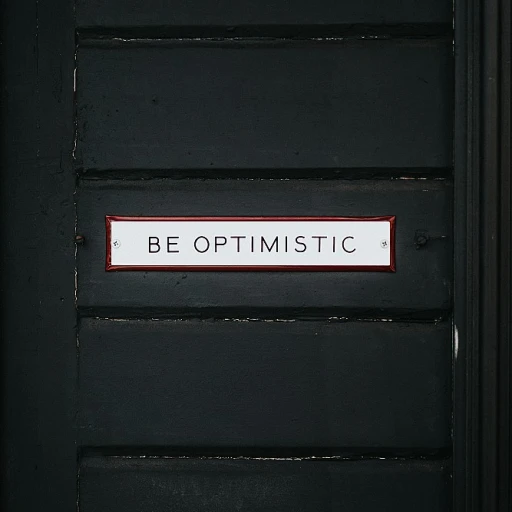
The Skills Gap: A Growing Concern
Addressing the Growing Skills Mismatch
The skills gap, a mounting concern across various sectors, is increasingly posing challenges for businesses, government agencies, and educational institutions. As industries evolve with rapid technological advancements and global shifts, there is an urgent need to better align workforce capabilities with market demands.
At the core of this problem lies the mismatch between the skills that employees possess and the skills that employers require. This disparity affects multiple layers of the workforce, from entry-level positions to senior roles that require advanced competencies. Not only does this gap hinder economic growth, but it also impacts individual career advancement and organizational success.
A comprehensive capability assessment can offer critical insights into addressing these gaps, enabling organizations to develop targeted strategies that align with their operational and strategic objectives.
Understanding the need for a capabilities-based framework is vital to tackling these discrepancies. By employing targeted assessments, organizations in sectors like the army, which often use joint capabilities integration and development systems (JCIDS), can pinpoint specific areas where skills are lacking, thereby informing both strategic and functional guidance.
Moreover, addressing skills gaps involves more than just identifying deficiencies. It requires a concerted effort to implement effective training education programs and capability development initiatives that transform identified gaps into strengths. This approach will provide organizations with a roadmap for integrating skills development into their human capital strategies, thereby fostering a more competent and agile workforce capable of meeting future challenges.
Navigating these complexities requires strategic guidance and the implementation of robust assessment cba frameworks, which will help organizations not only identify but also bridge the skills gap efficiently.
What is Capabilities-Based Assessment?
Defining Capabilities-Based Assessment
Capabilities-Based Assessment (CBA) is a strategic approach designed to align workforce capabilities with organizational needs, leveraging a structured and analytical framework. Originating from military applications, particularly within the army and joint capabilities contexts, CBA provides a comprehensive system to evaluate and develop essential skills within any operational force or organization.
At its core, CBA focuses on identifying and evaluating the gaps that exist between current workforce capabilities and the strategic objectives of the organization. This methodology integrates joint capabilities and strategic guidance to build a robust capability development system that supports not only current operational requirements but also future needs.
The CBA process involves a thorough capabilities integration development framework, utilizing a combination of assessment CBA techniques such as analysis faa (Functional Area Analysis), analysis fna (Functional Needs Analysis), and analysis fsa (Functional Solution Analysis) to provide insights into the specific capabilities needed. By doing so, it allows organizations, including the department defense and others, to establish a clear capability development strategy.
This approach differs from traditional evaluations by focusing on how to best support the needs of the organization through a comprehensive understanding of capability requirements. Tools such as the CBA user guide and system jcids (Joint Capabilities Integration Development System) offer functional guidance to ensure that the assessment process aligns with overall objectives, fostering effective training education and capability development.
As organizations seek to enhance their capacity to meet future challenges, understanding and implementing capabilities-based assessment can be an essential step in bridging the existing skills gap. More resources on this can be found here for those looking to enhance workforce competency specifically through IT skill evaluations.
Identifying Workforce Needs Through Assessment
Assessing Workforce Necessities
Capabilities-based assessment (CBA) plays an essential role in addressing workforce needs. Through this structured approach, organizations can systematically identify and understand capabilities required to effectively close operational gaps. By incorporating CBA with strategic guidance, companies can tailor their workforce development to meet specific demands.
The process begins with a comprehensive analysis of current and future needs. This involves:
- Gathering data on existing capabilities within the workforce and identifying where potential shortfalls—functional or otherwise—might exist.
- Utilizing a functional framework to map out the required skills and competencies relevant to the industry and operational environment.
- Conducting a joint capabilities assessment to ensure alignment with broader organizational goals, particularly in sectors like the army or department of defense where joint capability development is critical.
Assessment strategies like JCIDS (Joint Capabilities Integration and Development System) illustrate the effectiveness of this approach by highlighting gaps within current systems and providing a comprehensive guide for capability development.
Moreover, this assessment cba allows for an insightful analysis faa (functional area analysis), fsa (functional solution analysis), and fna (functional needs analysis). Ultimately, these tools offer a robust guide to optimizing training education frameworks that tackle identified skills deficits and workforce training issues.
By following a structured CBA process, organizations are better positioned to address their strategic objectives, resulting in a more capable and ready workforce. This integrated development strategy will enhance operational effectiveness by aligning human resource capabilities with the actual demands of the job market.
Implementing Effective Assessment Strategies
Strategic Steps for CBA Implementation
The implementation of effective capabilities-based assessment (CBA) strategies is crucial for addressing the skills gap efficiently. A successful assessment approach involves several key components that collectively contribute to a robust framework for identifying and addressing operational and functional gaps within an organization's workforce. Here's a guide on how to strategically implement CBA:
- Align with Strategic Guidance: Ensuring that the CBA aligns with the overarching strategic guidance of the organization is imperative. This alignment helps to create a shared understanding of objectives across departments, fostering the development of joint capabilities that support capability integration.
- Leverage JCIDS Framework: The Joint Capabilities Integration Development System (JCIDS) is a pivotal framework that assists in guiding the integration development process. Utilizing this system supports a structured approach to identify and assess capability gaps within the workforce.
- Functional Analysis: Conduct thorough analysis faa, analysis fsa, and analysis fna to diagnose specific capability needs. This involves evaluating job roles, tasks, and existing competencies to decipher potential training education and capability training requirements.
- Engage Stakeholders: Involving key stakeholders from the department of defense, analysis teams, and other relevant sectors ensures that different perspectives are considered in the assessment process, enriching the strategy development system.
- Develop a CBA User Guide: Creating a comprehensive cba user guide will provide teams with clear instructions and reference points for executing assessments, ensuring consistency and transparency across the board.
- Monitor and Adjust: Consistent evaluation and adjustment of the CBA strategies based on performance metrics and analytical insights are necessary. This dynamic approach allows for quick adaptations to any emerging trends or operational requirements.
These steps will help ensure the effective utilization of capability development assessments to bridge the skills gap, aligning workforce capabilities with organizational goals. While challenges are inevitable, a well-defined strategy accompanied by proper guidance will provide the necessary backbone for realizing desired outcomes in workforce development.
Challenges in Capabilities-Based Assessment
Overcoming Hurdles in Capabilities-Based Assessment
Addressing the skills gap through capabilities-based assessment (CBA) involves various challenges that require a strategic approach. These challenges, while substantial, can be effectively managed with the right framework and methodologies. Firstly, one of the significant issues is the lack of a consistent guide or system across organizations, especially within large entities like the army or joint capabilities environments. Each organization may have its own approach, leading to discrepancies in how skills and gaps are assessed and addressed. To overcome this, a more uniform assessment framework needs to be developed, ensuring that assessments align with the strategic guidance and comprehensive integration into the system JCIDS. Additionally, the dynamic nature of workforce needs poses a challenge. As operational requirements change, so must the assessments. This calls for a flexible capability development system that can adapt to new requirements swiftly. The integration development within joint capabilities demands assessments that not only identify current gaps but also anticipate future needs through ongoing analysis FAA, FSA, and FNA. The implementation of capabilities integration and development strategies often encounters resistance due to the existing functional silos within organizations. Bridging these gaps requires a concerted effort in change management, emphasizing the importance of a capabilities-based approach and fostering a culture that values continuous training education and development. Finally, technological limitations can impede the efficacy of assessment tools. Without the right systems in place, achieving precise and actionable insights from assessments is challenging. Organizations must invest in advanced technologies that support comprehensive capabilities-based assessments. Despite these challenges, a well-implemented CBA can greatly enhance the capabilities of any force or department defense team. With the right strategy and guidance, capability development through robust assessment can significantly narrow the skills gap, creating a more competent and efficient workforce.Future Trends in Skills Assessment
Emerging Trends in Skills Assessment
The landscape of skills assessment is continuously evolving, shaped by technological advancements, changing workforce needs, and the demand for more tailored capabilities-based assessment (CBA). Understanding these trends can guide organizations in refining their capabilities integration frameworks and strategic guidance.- Increased Use of Data Analytics: The integration of data analytics into the assessment process is offering more comprehensive insights into capability gaps. By leveraging data from the joint capabilities development system, organizations can perform a more precise analysis of workforce needs.
- Emphasis on Soft Skills: As the operational needs of organizations diversify, the focus on soft skills such as communication, adaptability, and critical thinking is growing. Assessment strategies are increasingly centered on evaluating these critical skills alongside technical competencies.
- Adaptive Learning Technologies: Real-time feedback mechanisms, powered by adaptive learning technologies, are enabling a more functional approach to training. This allows for dynamic capability development and functional guidance, tailored to individual or team needs.
- Collaborative Assessment Models: There's a shift towards joint assessment models that incorporate input from diverse departments. Such collaboration ensures a more balanced approach to capabilities based assessment and helps align strategic guidance with the army’s broader goals.
- Focus on Lifelong Learning: Lifelong learning is becoming a central theme in workforce strategies, with systems like the U.S. Army’s capabilities integration development system emphasizing continuous training education to maintain a competitive force.












